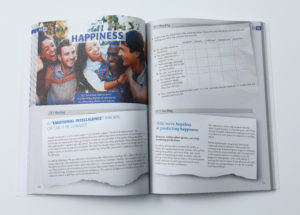Introduction
Although inlingua language training is principally based on learning by speaking (see my blog link), there are occasions when conducting a lesson from a simple text may be an option. Trainers may find themselves having to fill in for a colleague at short notice or conducting a one-to-one lesson where the learner requires a particular topic or register.
There are occasions when additional practice of a specific structure or topic is required. Extra work with the text provided in the inlingua material may be used to expand a lesson in this situation.
In addition to reading for specific information, general understanding or detail, the text may be used in a great number of ways. Some ideas are discussed in this post, but there are many other ways to exploit a text.
 Dictation
Dictation
Dictation may feel like a bit of a ‘dirty word’ to anyone that has had the misfortune of experiencing an old-fashioned formal education, but as a language learning exercise it can be fun and productive. The trainer could, for example, read out the text simply as a listening exercise after asking the learners to look out for some specific information. It could be used as a springboard for a further discussion by asking a question for general understanding. The text could also then be referred to, for detailed examination and discussion e.g. why did the author use ‘have tried’ and not just ‘tried’ in the text?
Dictation for writing to focus on spelling or punctuation could be done, or peer dictation to simultaneously drill some pronunciation issues.
Reconstructing a text from memory in pairs can also be a challenging exercise after a dictation.
Reduce the text
Get learners to reduce the text to a specific number of words or simply reduce the total number of words used as much as possible. This can be done as pair work to encourage learners to work together communicating, of course, in the target language.
Adjectives
With short, simple texts, get learners to add an adjective in front of every noun or an adverb to every verb.
 Transforming the text
Transforming the text
Ask the learners to change the text as if it was from another perspective. This could mean writing it in the third person instead of the first person or changing the genre to a theatre piece rather than a factual report and so on.
Gap fills
Creating gap-fill exercises requires a bit of preparation, but care should be taken by the trainer to block out specific parts and not just random words. This could be prepositions only or collocations in the text.
Dogme
Although Dogme teaching is very learner oriented, it is also possible to use it with a text-based lesson. Click here for an example.
For further ideas see here and here.
Next Blog: Keeping You in the Picture: some ways of exploiting pictures for language teaching.